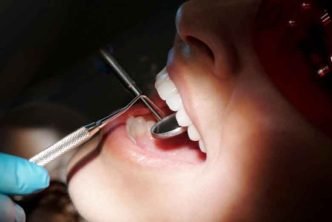Oral immunotherapy, often known as OIT, is a food allergy treatment. This game-changing procedure can eliminate your anxieties about food allergies probably altogether. Read on to find out everything you need to know about this novel treatment.
Table of Contents
What Is OIT?
OIT is a procedure that reintroduces foods that cause you an allergic reaction slowly and cautiously. OIT is a procedure that reintroduces foods you are allergic to slowly and cautiously. This treatment helps the immune system gets accustomed to the food, reducing allergy symptoms when exposed to it again.
The procedure isn’t set up to completely integrate the food into your diet but instead to lessen the effects of accidentally eating a product. This way, you don’t have to live in constant terror of being exposed to this product.
Who Is Eligible for OIT?
Candidates for OIT are people who are at least four years old upwards and have allergic reactions to certain foods. It’s crucial to know the difference between a food allergy and food intolerance in this scenario. A food allergy occurs when the body’s immune system believes the food is harmful to the body, resulting in a systemic allergic reaction.
An itchy rash, difficulties breathing, wheezing, swelling of the tongue, lips, or throat, nausea, abdominal cramps, vomiting, diarrhea, and loss of consciousness are all common food allergy symptoms that appear within 30 minutes to 2 hours of consuming the item. If not treated promptly, extreme allergic reactions to foodstuffs can result in death. OIT comes in to assist in lessening or completely eliminating the severity of your allergic responses.
Is Oral Immunotherapy a Cure for Food Allergies?
Unfortunately, oral immunotherapy is not a cure for food allergies. Food allergy treatment with oral immunotherapy is not a “cure.” Its sole purpose is to desensitize allergy sufferers to an allergen or shield them from an adverse reaction if they accidentally eat small quantities of their allergen.
When the person eats smaller amounts, they may have a milder reaction or none at all. However, they can’t consume a meal that comprises of their allergen on purpose. Those undergoing OIT must continue to limit their exposure to their allergen or allergens in their daily meals.
It is important to note that protection against exposure or small quantities only lasts as long as the patient gets OIT treatment. This is unlike tolerance, where a person can eat any proportion of the food without developing an allergic reaction and being exposed to it repeatedly in therapy.
When one is desensitized, they are less allergic to their specific allergen. For example, when one becomes desensitized to peanuts, they cant go ahead and feat on a peanut butter and jelly sandwich. However, if they ate a piece of peanut-filled cookie by accident, they would have a milder reaction to it than a person who isn’t desensitized.
Benefits of OIT
There are numerous advantages to using OIT. First, it has a great potential to enhance the quality of life for parents or families with kids who suffer from food allergies. If the treatment is a success, it provides families more freedom to manage allergic reactions to certain foods, reduce stress, and minimize the risk of anaphylaxis.
You can finally get to enjoy parties, restaurants, and gatherings with your child, without being anxious about a reaction happening from an accidental exposure if you’ve reached the OIT maintenance phase. OIT also goes a long way in assisting your child in feeling more included in various activities, including sports, play dates, school, and afterschool programs.
Can You Receive OIT for Several Foods?
OIT is most commonly used to treat a single food allergy. However, OIT with numerous food allergies is still being researched. One study of OIT with different foods simultaneously has demonstrated positive results, but more research is required.
It is advisable to consult your child’s allergist if you have many food allergies and wish to try OIT. They just might be able to participate in OIT clinical trials for numerous foods or foods besides just peanuts.
What are the risks involved with oral immunotherapy?
It’s necessary to keep in mind that OIT entails a child ingesting portions of the food they are allergic to. As a result, there’s still a chance they will have a serious allergic reaction to the food during or after the treatment.
Due to the introduction of allergens in treatment, there is generally a higher chance of adverse reactions. Furthermore, not all children will be able to get desensitized. Nevertheless, if they receive extra protection, kids who have received OIT must continue to take the same safety measures they have always taken. They should avoid the foods to which they are allergic and maintain two EpiPens nearby in case of an allergic reaction.
Because they are consuming the substance they are allergic to, they may have negative effects during OIT. These side effects are prevalent and may necessitate discontinuing treatment. The majority of symptoms are minor, although they can be serious. They may include the following:
- Itching of the mouth or tongue
- Scratchy, sore, or itchy throat
- Runny nose
- Cough
- Nausea
- Heartburn
- Vomiting/diarrhea
- Stomach pain
- Hives
- Swelling
- Aversion to the treatment or food
With OIT, a strong allergic reaction referred to as anaphylaxis is another possibility. According to studies, a child who receives peanut OIT is more likely to have a severe allergic reaction than a child who receives no treatment.
The dose in OIT is carefully controlled and calibrated by the doctor to lessen the danger of anaphylaxis, but it does not completely avert the risk. Children undergoing OIT have a greater rate of anaphylaxis and also use epinephrine more frequently than kids who are not. OIT can cause eosinophilic esophagitis (EoE), a rare but serious side effect. Eosinophilic esophagitis is when your child’s esophagus or swallowing tube gets inflamed or swollen. This esophageal allergy condition causes stomach pain, difficulty swallowing, and vomiting. Around 5% of people who perform food OIT acquire EoE as a side effect, usually after the OIT is stopped.





